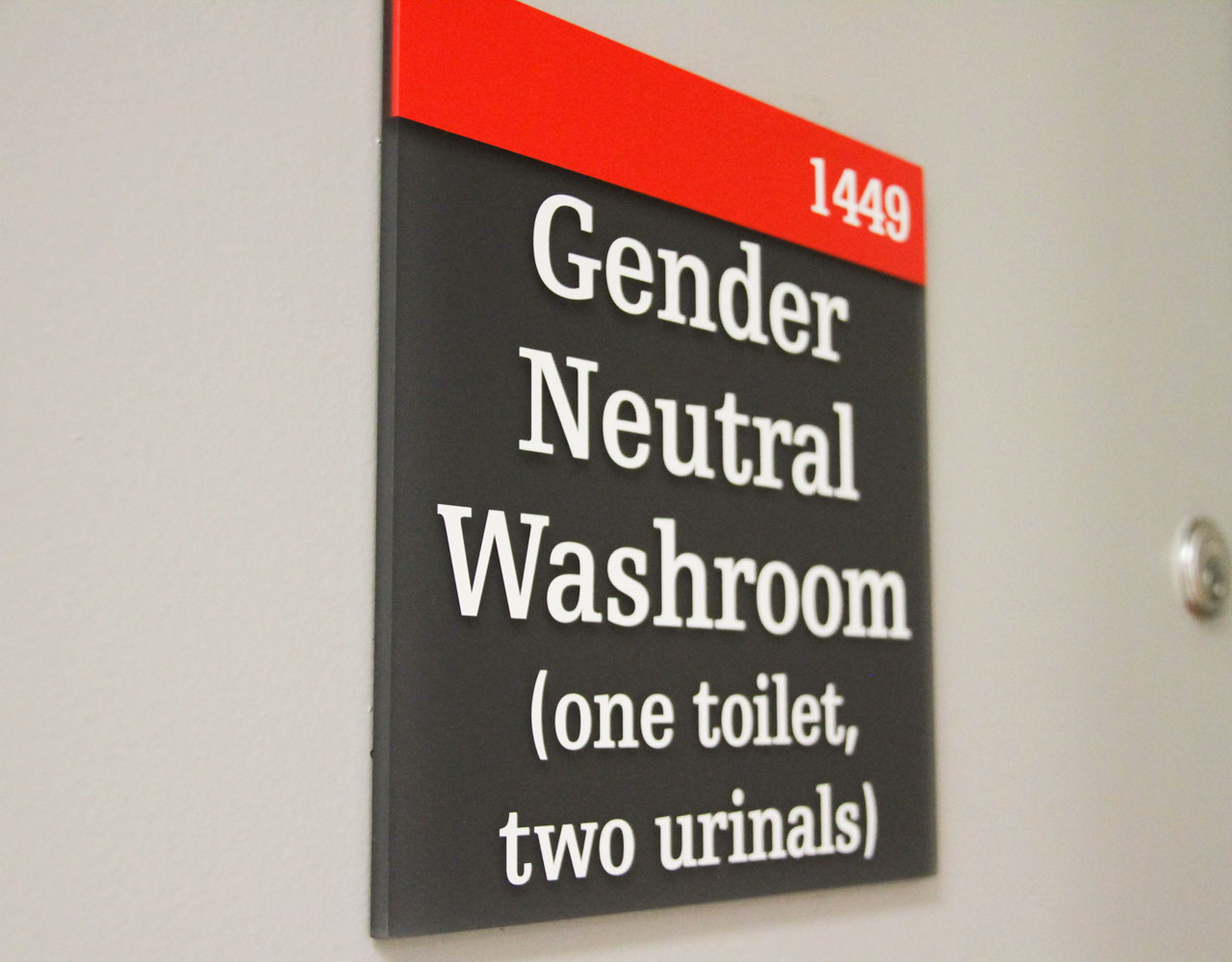A new gender-neutral washroom has been introduced on campus.
The department of women’s and gender studies at Carleton had been permitted by the university to use signs to mark a men’s washroom as gender-neutral on the 14th floor of Dunton Tower as of December.
On Jan. 10, Carleton’s interim president Alastair Summerlee met with the faculty and students in the women’s and gender studies program to commemorate the installment of the sign.
In a speech given at the event, Summerlee expressed his support for the new washroom.
“What is it that makes a washroom male and what makes a washroom female? . . . Such a way of referring to washroom facilities was exclusionary,” Summerlee said. “You could be a man or a woman and identify as a man or a woman and still, in my view, feel excluded. I’m not interested in using a washroom that has a gender.”
The department is in the process of applying for funds to make the washroom officially universal, and had made it clear that the current gender-neutral sign is temporary until renovations can be made.
In a speech at the event, Megan Rivers-Moore, a women’s and gender studies professor, said the new washroom is about dignity and justice for students, faculty and staff.
“It’s about how the work we do here every day we can only do if we are physically safe, and if our bodies and our bodily needs are being taken care of . . . It’s about accessibility for our community,” she said.
According to Dan Irving, a professor of human rights and sexuality studies at Carleton, there have been countless cases of students feeling unsafe and uncomfortable when using washrooms on campus. In an interview with The Charlatan, Irving recalled one dangerous situation.
“I had a student who was brutally attacked in a bathroom . . . He was beaten unconscious, and when he regained consciousness, he came to me,” he said.
Irving added that finding an appropriate washroom facility can be difficult for students during class breaks.
“If a professor gives a class 10 or 15 minutes [for a break] and one student has to go clear across to St. Patrick’s Building to use the bathroom, it means that they lose class time,” he said.
Carleton’s Facilities Management and Planning (FMP) spent several months going back and forth with the department of women’s and gender studies as the signs were continuously torn down and put back up starting in the fall—sometimes several times a day—according to Lana Keon, the institute administrator at the Pauline Jewett Institute.
Rivers-Moore said that the signs were removed by FMP and replaced by herself and Keon. Rivers-Moore said the department then contacted Equity Services to see what could be done to support the initiative for a gender-neutral washroom. Equity said it had already been contacted about the issue by FMP, and was working towards a solution.
Since Jan. 1, 2015, the Ontario Building Code Regulation requires “at least one universal washroom in all new buildings or major renovations, and, for multi-storey buildings, at least one for every three floors. The Building Code Regulation also permits single-user, gender-neutral washrooms for everyone instead to help meet the needs of those who are not comfortable using gender-specific washrooms.”
At Carleton, there are currently 14 buildings that house official universal washrooms. According to Equity’s website, all-inclusive washrooms are marked with a sign featuring a toilet and the letter ‘U,’ and can be used by everyone, including students with disabilities.
However, the new gender-neutral washroom in Dunton Tower did not meet the requirements to be considered one without permission from the university’s president, because it did not meet building regulations, such as being accessible.
Summerlee was then contacted by Equity Services and expressed his support. He said the new washroom is just the beginning.
“[I have] asked Equity to actually be engaged in that discussion so that every building has the ability for people—no matter what their gender identification—to be able to feel comfortable in going to the washroom and not have to walk miles in order to be able to find something that they would feel comfortable in,” Summerlee said.
In an interview with The Charlatan, Rivers-Moore said that she hopes others will not have to push for gender-neutral washrooms as she and Keon did. She said she hopes that buildings on campus will soon have many more universal bathrooms.
At the end of her speech, Rivers-Moore raised her glass.
“This is one place where trans and non-binary staff and faculty and students can not have to face trans-antagonism . . . but it’s only one place and we have a lot of work still to do,” she said.
Photo by Meagan Casalino






